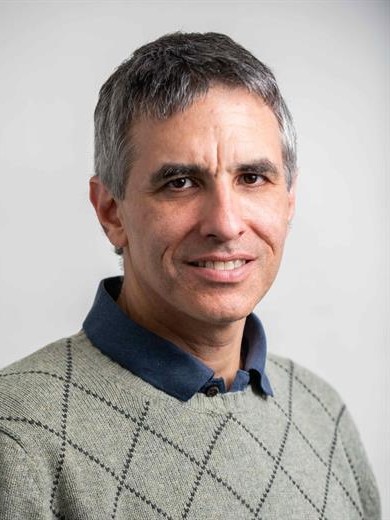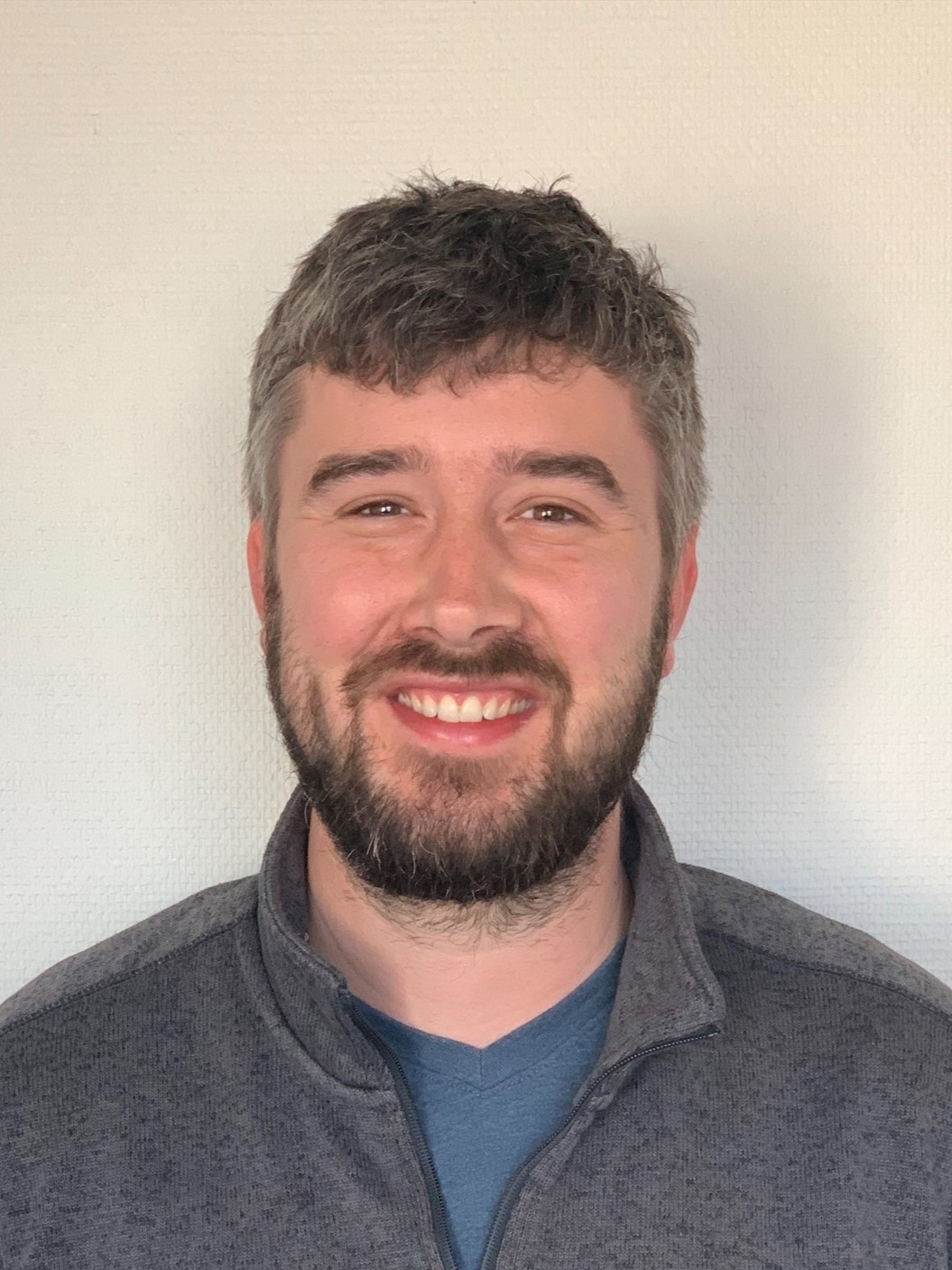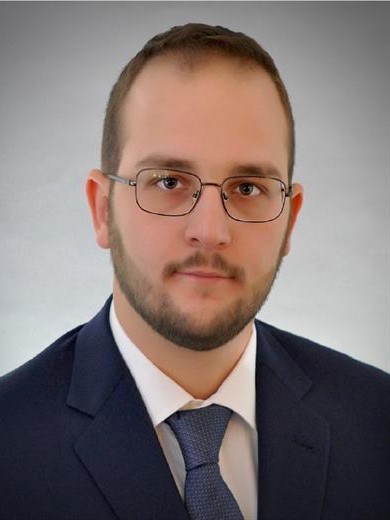Red Lotus Project: People
Directors
 Prof. Marc Hodes
Prof. Marc Hodes
Professor Hodes, while at Bell Laboratories (Murray Hill, NJ) began working on superhydrophobic surfaces in the early 2000s in the context of an experimental demonstration of reversible Cassie-to-Wenzel state transitions via electrowetting and transition boiling. Since then his work has focused predominantly on the analysis of internal and, often, diabatic, flows in the Cassie state. Physical effects captured include slowly-varying meniscus curvature, edge effects, thermocapillary stress, diffusion of gas from the plastron into the liquid and phase change along menisci. A myriad of results have been published on apparent slip lengths and Nusselt numbers in the presence of such effects. Recent work exploits mathematical similarities between problems related to thermal contact resistance, heat sinks and heat pipes and flows over superhydrophobic surfaces.
 Prof. Darren Crowdy
Prof. Darren Crowdy
Darren Crowdy leads the Applied and Computational Complex Analysis (ACCA) group at Imperial College London. A main theme of his research interests lies in the application of complex analysis techniques across the applied sciences. He has made many contributions to understanding multiphysics transport phenomena in various settings. His expertise in low-Reynolds-number hydrodynamics, in particular, his work on the quantification of hydrodynamic slip over superhydrophobic and liquid-infused surfaces has particular relevance to the remit of the Red Lotus Project which he co-founded in 2016.
 Prof. Demetrios Papageorgiou
Prof. Demetrios Papageorgiou
Demetrios Papageorgiou is a Professor of Applied Mathematics at Imperial College. His research interests and expertise are in analytical and computational fluid dynamics, including singularity formation in PDEs, nonlinear stability of multifluid EHD flows, nonlinear dynamics of interfacial flows, multiphysics effects such as surfactant additives, viscoelasticity and nonisothermal flows. He has published extensively in the area, including a recent article in the Annual Reviews of Fluid Mechanics on nonlinear waves arising in multi-fluid electrohydrodynamics.
Senior Research Scientists
 Dr. Michael Mayer
Dr. Michael Mayer
Dr. Mayer started his journey with superhydrophobic surfaces upon commencing his PhD under the tutelage of Professor Hodes at Tufts University. There he rediscovered the exciting world of applied mathematics, solving numerous problems concerning or related to superhydrophobic surfaces. These include published and ongoing works on thermal contact resistance, the effect of gas diffusion through menisci on Cassie state longevity, and, more recently, the role of surfactants on flows of liquid over SHS. Now a post-doctoral researcher at Imperial College London, his research interests are basically all things interfacial. Concerning superhydrophobic surfaces, he is especially interested with the effects of temperature or surfactant induced surface tension gradients on flows of liquids and the inherent complicated multiphysics problems.
 Dr. Toby Kirk
Dr. Toby Kirk
Toby is a Chapman Research Fellow in the Department of Mathematics where he earned his PhD in 2017 investigating flow over micro-structured surfaces and their application to forced convection. His work has focused on flow in the Cassie state over superhydrophobic surfaces, developing a range of asymptotic and semi-analytical solutions for the hydrodynamic and thermal problems, accounting for effects such as meniscus curvature and thermal Marangoni stresses. He was also recently a postdoctoral researcher at the Mathematical Institute, University of Oxford, where he modelled lithium-ion batteries until 2022. His research interests lie in the application of perturbation and complex methods to problems across industrial and engineering mathematics, fluid dynamics, and transport phenomena.
 Dr. Prasun Ray
Dr. Prasun Ray
Prasun is a Senior Teaching Fellow in Applied Mathematics at Imperial. His research interests include the stability and nonlinear dynamics of shear flows of complex fluids. Recently, he has been investigating the flow of non-Newtonian shear-thinning liquids in channels with superhydrophobic surfaces utilizing a mix of numerical simulations and asymptotic analysis.
Dr Georgios Karamanis
Georgios Karamanis is a Research Assistant Professor of Mechanical Engineering at Tufts University and co-founder, with Professor Hodes, of Transport Phenomena Technologies, LLC. A major component of his PhD work was the solution of the extended Graetz problem for flow through a superhydrophobic microchannel. He has also done major work on superhydrophobic surfaces in the contexts of thermocapillarity and species transfer.
Group Members
Imperial College London
 Hiroyuki Miyoshi
Hiroyuki Miyoshi
Hiroyuki Miyoshi is a PhD student at Department of Mathematics at Imperial College London. His main research topic is establishing a new method for numerical calculations for transport theory such as electrostatics and fluid dynamics, using complex analysis. In particular, he uses a special function called "Schottky-Klein prime function" in order to evaluate these fields. He is currently working on calculating the two-phase flow in a periodic channel.
 Henry Rodriguez Broadbent
Henry Rodriguez Broadbent
Henry Rodriguez Broadbent is an applied mathematician who has been researching superhydrophobic and liquid-infused surfaces over the course of his PhD, using methods in complex analysis to find exact solutions to Cassie state and multi-phase flows. Investigating phenomena arising from meniscus curvature, surfactant contamination, and considerations for heat transfer, he has published several results on hydrodynamic slip lengths, Nusselt numbers, and shear-driven failure of liquid-infused surfaces.
 Anna Curran
Anna Curran
Anna Curran joined the Red Lotus Project as a PhD student in 2021 under the supervision of Profs Darren Crowdy and Demetrios Papageorgiou, having previously completed an MSc at Imperial College London and a BSc at the University of Edinburgh. Her research focuses on using methods from applied and computational complex analysis to study transport phenomena along superhydrophobic surfaces, with a focus on modelling the effects of surfactants at these interfaces.
Tufts University
.jpg) Haotian Jia
Haotian Jia
Haotian Jia is a Ph candidate in the Department of Mechanical Engineering at Tufts University. His research, supervised by Professor Marc Hodes and co-advised by Professor Georgios Karamanis, focused on the momentum and mass transfer process inside nanoporous media (i.e., aerogels) experiencing the Knudson effect, and study the transport phenomena on superhydrophobic surfaces using the tools of applied mathematics. Haotian earned his B.S. in Machine Design & Manufacturing and Automation from Beijing Forestry University (BJFU) in July 2018 and joined Professor Marc Hodes's group at Tufts as a research assistant in March 2019. His research interests lie in using the tools of applied mathematics to understand and solve the engineering field's momentum, heat, and mass transfer problems. Haotian has worked on developing an apparatus to measure the permeability of nanoporous media aerogels using redundant methods and demonstrating mass transfer enhancement of the ambient-pressure freeze drying of aerogels experiencing the Knudsen effect through jet impingement. Haotian is currently working on two projects: using photoresponsive surfactants and light to induce Marangoni stress and enhance flow lubrication on superhydrophobic surface microchannels, and using asymptotic expansion to solve the flow field of a vapor and liquid phase in an axial groove heat pipe problem, including adding first-order corrections to previous work done by Hodes et al. In the summer of 2022, Haotian traveled to Imperial College London through the Tufts Global Research Assistant Program and collaborated closely with Dr. Michael Mayer and Professor Toby Kirk at Imperial College London on these two projects, respectively.
 Michael Birosak
Michael Birosak
Michael Birosak started his PhD in the Department of Mechanical Engineering at Tufts University in the fall of 2018 after graduating from Bucknell University (where he studied mechanical engineering and Russian) that spring. His work with his advisor Professor Marc Hodes includes the analytical modeling of variable conductance heat pipes (a heat transfer device commonly used in the thermal management of electronics) and the experimental study of superhydrophobic surfaces. He is currently designing and performing microfluidic experiments to explore the ability of photoresponsive surfactants to increase the apparent slip observed in superhydrophobic microchannels and also their potential as a means of flow control.
Alumni
- Dr. Simon Game, Ripjar Ltd.
- Dr. Jonathan Marshall, University College London
- Dr. Elena Luca, University College London
- Dr. Lisa Lam. Memorial University of Newfoundland
- Dr. Sam Tomlinson, University of Manchester
- Jonah Kadoko, Asensus Surgical
- Daniel Kane, Concurrent Engineering


